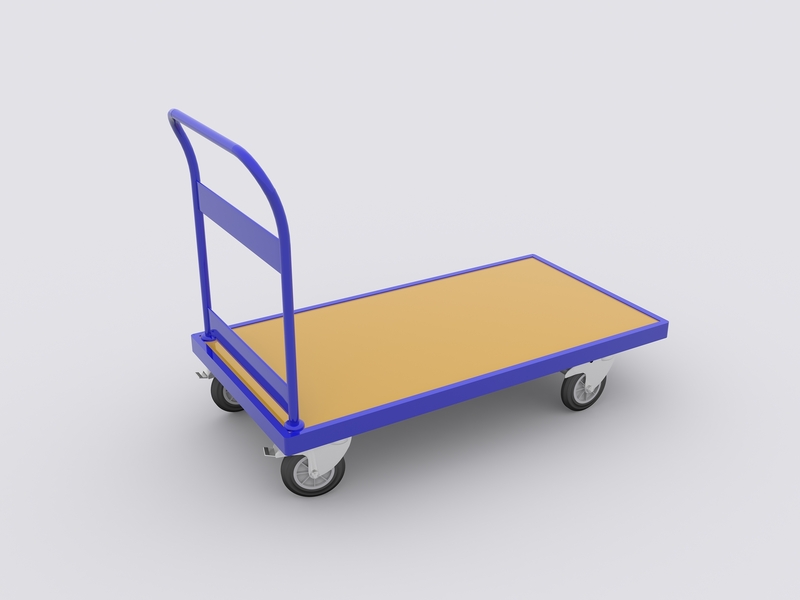Comprehensive Guide to Storing Idle Freezers
Posted on 21/06/2025
Comprehensive Guide to Storing Idle Freezers
Are you wondering how to best manage your freezer when it's not in use? Whether you're temporarily pausing its use or preparing for a move, properly storing idle freezers is crucial for their longevity and optimal performance. In this comprehensive, SEO-optimized guide, we'll walk you through everything you need to know about how to store an unused freezer safely and efficiently.
Why Proper Storage of Idle Freezers Matters
Many people treat their freezers as plug-and-use appliances, forgetting that proper maintenance and storage--especially during periods of inactivity--are vital. Neglecting the correct storage of idle freezers can lead to:
- Mold growth and unpleasant odors
- Permanent damage to internal components
- Reduced energy efficiency and costly repairs
- Electrical dangers if improperly disconnected
Understanding the right way to store a freezer when it's not needed ensures it remains in optimal condition and ready for use whenever required.

Preparing Your Freezer for Storage
Preparing a freezer for storage involves more than just unplugging it. Follow these essential steps for the best results:
1. Defrost the Freezer
- Unplug the appliance and allow all ice to melt completely. This usually takes several hours, depending on the amount of buildup.
- To speed up the process, you may place towels at the bottom of the unit to absorb water or use a hairdryer for stubborn ice (with caution).
- Tip: Never use sharp objects to scrape off ice as it can damage the interior walls.
2. Clean Thoroughly
- Wash the interior with a mixture of mild soap and warm water, ensuring all stains, spills, and food residues are removed.
- Don't forget to wipe down the shelves, drawers, and gasket (door seal).
- Sanitize surfaces with a solution of one tablespoon baking soda per quart of water for odor control.
3. Dry All Components
- After cleaning, use a soft towel to dry every nook and cranny.
- Leave the freezer door open for several hours to air out and prevent moisture buildup.
- Moist environments can catalyze mold and mildew growth, so ensure there's no lingering dampness.
4. Remove and Store Loose Parts
- Take out removable shelves, racks, and baskets.
- These can be packed separately or placed back inside the unit after carefully securing them to prevent movement during handling or transport.
- Label each part for easy reassembly later.
Best Places to Store Idle Freezers
The location you choose for storing an unused freezer will greatly impact its future performance and longevity. Here are top recommendations:
1. Climate-Controlled Indoor Spaces
- Basements - Usually provide stable temperature and humidity, which is ideal.
- Utility rooms or spare rooms in the home can also work, as long as they're ventilated and away from heat sources.
- Avoid storing in areas with extreme temperatures, as this can damage electrical and mechanical components.
2. Garages and Outbuildings
- While convenient, garages and similar spaces can experience temperature swings and dampness.
- Placing a moisture absorber inside the freezer can help prevent mildew if you must use these areas.
- Store the freezer off the ground on wooden pallets to protect from condensation or flooding.
3. Self-Storage Units
- Choose a climate-controlled storage unit when storing a freezer for an extended period.
- Ensure the facility allows non-operational appliances and complies with insurance requirements.
Safety Steps for Power and Placement
When storing an idle chest freezer or upright freezer, a few safety precautions can prevent accidents and damage:
- Unplug and wrap the power cord securely. Tape it to the back or inside of the freezer for safekeeping.
- Never store the freezer in a horizontal (sideways) position; always keep it upright to avoid compressor damage.
- Keep the appliance away from direct sunlight and heat sources, like radiators or water heaters.
- Allow sufficient clearance around the unit for air circulation, preventing condensation and rusting.
Preventing Mold and Odors During Storage
Even after drying and cleaning, idle freezers can still develop musty odors or mold if not ventilated properly. Follow these best practices:
- Keep the door or lid slightly ajar using a rolled-up towel, small block, or manufacturer-provided wedge (if applicable).
Never let the door close completely during long-term storage. - Place an open box of baking soda, charcoal, or moisture-absorbing crystals inside to neutralize any odors or excess humidity.
- Check periodically (if possible) to ensure that there is no moisture accumulation, mold spots, or unwanted smells developing.
Moving and Transporting Freezers for Storage
If you're relocating your freezer to an offsite storage facility or another property, proper transport is essential to avoid damage:
Steps Before Moving
- Secure all doors/lids with tape or moving straps, but never tape directly over rubber seals as it might tear them.
- Pad corners and exposed areas with blankets or bubble wrap.
- Keep the freezer upright at all times. Tilting or lying flat may displace the compressor oil, potentially damaging the system.
After Arrival
- Allow the freezer to settle in its upright position for at least 6-8 hours (24 hours is ideal) before plugging in, if planning to use it soon after moving. This helps oil in the compressor settle back.
- Re-check for moisture, mold, or loose parts before formally storing.
Tips for Storing Freezers Short-Term vs. Long-Term
The length of storage can affect the care and steps involved. Here's what to know about short-term and long-term freezer storage:
Short-Term Storage
- Follow the basic steps: unplug, defrost, clean, dry, and prop the door open.
- If possible, check on the freezer every few weeks to spot any issues early.
- Short-term storage (under 3 months) is less risky for odor and mold, but ventilation is still crucial.
Long-Term Storage
- For periods longer than 3 months, extra care is needed.
- Disassemble removable parts and store them separately if practical.
- Consider treating surfaces with a light coat of mineral oil to prevent drying and cracking, especially on rubber gaskets.
- Document storage details in case of warranty or insurance claims.
Common Mistakes to Avoid in Freezer Storage
Many people unintentionally cause damage to their idle freezers by:
- Storing a dirty or damp freezer--leading to mold, corrosion, and odors
- Leaving the power cord loose--potential trip hazard and at risk of fraying or chewing by pests
- Failing to prop open the door--causing internal mildew buildup
- Stretch-wrapping the freezer airtight--trapping moisture inside
- Storing outdoors--exposing components to temperature extremes and humidity
Reviving Your Freezer after Storage
When it's time to put your freezer back into service, following a few revival steps ensures smooth and safe operation:
- Inspect for visible damage, mold, or pests. Thoroughly clean and disinfect as needed.
- Reinstall racks, baskets, and shelves. Ensure all components are secure and functional.
- Plug in the freezer and monitor for proper operation. If any unusual noises or issues arise, consult an appliance specialist.
- Allow the unit to cool down to the appropriate temperature before repopulating with food.
Frequently Asked Questions about Storing Idle Freezers
-
Can I store my freezer outdoors?
It's not recommended. Outdoor storage exposes the appliance to weather, corrosion, and rapid deterioration. Only store in covered, climate-controlled spaces. -
How do I avoid odors when my freezer is not in use?
Always clean thoroughly before storage, keep the door slightly ajar, and use an open box of baking soda or moisture absorber inside the freezer. -
How long can I store a freezer without using it?
When properly cleaned, dried, and left ventilated, freezers can be stored indefinitely. Check periodically to maintain condition. -
Do I need to cover my freezer during storage?
You can use a breathable dust cover, never plastic or airtight wrap, which can trap moisture. -
Should I plug my freezer in occasionally to keep it functional?
It's generally unnecessary if you've thoroughly prepared and stored it properly. However, if idle for years, a brief test run every 6-12 months is advisable.

Key Takeaways for Storing Unused Freezers
- Thorough cleaning and drying are the most important steps to prevent mold, odors, and long-term damage.
- Store freezers in cool, dry, and ventilated areas away from extreme temperatures and direct sunlight.
- Never seal the door shut completely; always allow for airflow inside the appliance.
- Keep the power cord and removable parts secured for convenient and safe reactivation.
- Periodically check stored freezers for any signs of deterioration, especially during long-term idle periods.
Conclusion: Extend Appliance Life with Proper Idle Freezer Storage
Properly storing a freezer during periods of inactivity isn't just about keeping it out of sight; it's an essential routine for longevity, efficiency, and performance. By following the steps outlined in this expert guide--from thorough cleaning to strategic placement and ventilation--you'll safeguard your investment and ensure your freezer is always in peak condition when you need it next.
For more appliance care tips and troubleshooting guides, bookmark this page and keep your kitchen running smoothly all year round!





